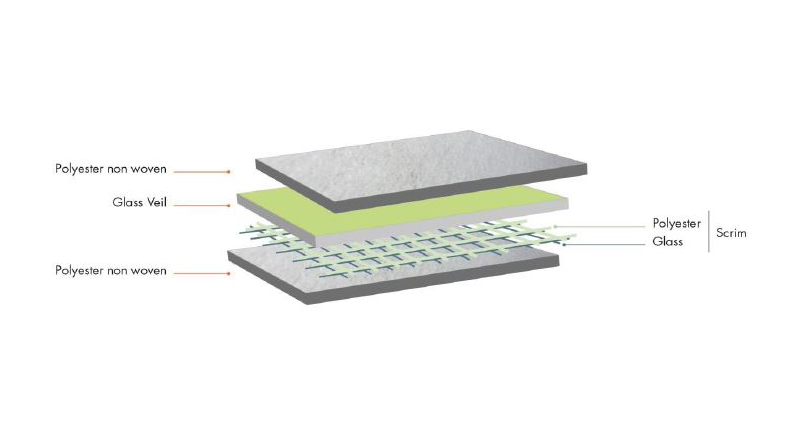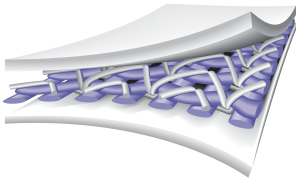Scrim is a non woven material used for reinforcing roofing. It’s a relatively new product of technology, more effective than woven fibers. The fibers that make up roofing scrim are chemically bonded, and can be joined at a variety of angles, all adding to its strength and durability. Unlike the fibers on woven material, the fibers are not crimped. Scrim is a strong, and flexible material that can also be fire retardant. So, when you hear of the term ‘scrim’, associate that with a strong and resistant roof.
Benefits of Using Roofing Scrim
Incorporating it into your roofing materials comes with numerous advantages:
1. Enhanced Durability
Scrim increases the lifespan of roofing materials by resisting mechanical damages such as tears and punctures. This durability is crucial in areas subject to harsh weather conditions.
2. Improved Tensile Strength
The interwoven nature of scrim fabrics provides significant tensile strength, helping the roof withstand the forces of wind, hail, and heavy rains.
3. Moisture Resistance
By reinforcing roofing membranes, scrim helps prevent water infiltration, which is essential for avoiding leaks and water damage.
4. Cost-Effectiveness
Using scrim can extend the life of your roofing system, reducing the need for frequent repairs or replacements and ultimately saving money in the long run.
Types of Scrim
There are several types of scrim, each suited to different types of roofing applications:
- Fiberglass: Known for its durability and fire resistance, making it ideal for commercial roofing projects.
- Polyester: Offers more flexibility than fiberglass and is often used in residential roofing for its ability to withstand natural movements and adjustments over time.
Common Applications
scrim can be used in various applications, ensuring flexibility across different projects:
- Bituminous Roofing Systems: Scrim is often used in these systems to provide extra strength against environmental stresses.
- Single-Ply Membranes: It can be incorporated into PVC or TPO membranes to enhance their resistance to physical damage.
- Liquid-Applied Membranes: Adding it to liquid membranes can improve their crack-bridging capabilities and overall performance.
Conclusion
Roofing scrim is a vital component that adds strength and durability to roofing systems. Whether you are installing a new roof or refurbishing an existing one, considering it can provide long-term benefits, protecting your investment and ensuring the safety of your property. For more detailed information and personalized advice in your next project, contact AH Construction Co, your trusted roofing experts.
Remember, the right materials make all the difference in the longevity and performance of your roof. Choose wisely and protect your home against the elements effectively and efficiently.

